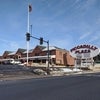What it takes to be “The Best”
 Peter Stanton
Peter Stanton
It's gotten awfully confusing these days to figure out who is “The Best” and “Best of,” and I'm convinced publishers are to blame. In 1974, Boston Magazine came out with its first “Best & Worst of Boston” issue. In just a few years the annual issue became a big hit among readers and advertisers, even as “The Worst” was dropped in 1994.
Boston Magazine always had its editors choose the best; no readers poll, no survey in the magazine – like it or not – they have their staff pick the winners. However, followers who picked up the “Best of” idea over time converted it to a reader survey. Today you'll find most dailies, community weeklies and monthly magazines with their own version of “Best of” issue derived from a readers' poll; even WBJ now does a “Best of Business” issue focused on business-to-business categories.
With all these publications, companies have plenty of opportunities to land on a “Best of” list, as a point of pride for employees and a boost to marketing.
In the 1990s, a similar measure of “The Best” was developed by business-to-business publishers, which grew into the “Best Companies” or “Best Places to Work” lists. Instead of reader surveys, outside firms with powerful software conducted confidential employee surveys, providing valuable data points for an organization to know where it stood with its people, as well as a list for publishers to promote the best-scoring companies. Survey firms gather extensive feedback from a representative number of employees on a company's corporate culture, leadership and planning, work environment, pay and benefits, training and development and employee engagement.
Forbes magazine began its “Best Places To Work” issue in the late 1990's, an effort later adopted by business publishers. Daily newspapers jumped on board, such as the Boston Globe has been producing a “Top Workplaces” issue. While it is no doubt rewarding when a company makes the list, just as valuable are the survey results the company receives from its employees. It can be a powerful HR tool.
I describe this clear distinction between a “Best of” reader survey and “Top Workplace/Best Places to Work” issues because unfortunately, those lines are getting blurred. Worcester's local daily has been heavily promoting a new “Best Places to Work” public survey – but there is no confidential survey of company employees. Instead, it's a straight readers poll, a popularity contest. The survey asks you and me to vote for a best company, a best benefits program, a best boss, a best workplace culture and other categories when we don't work there.
While employees may no doubt put an educated vote in for their employer, the voting is open to everyone, and the survey form encourages readers to vote daily over the period of a month. Allowing people outside a company to vote up or down on its workplace conditions, policy and culture clearly stands the Forbes/Boston Globe version of Top Workplaces on its ear.
It's a wonkish issue, but is anybody else worried about the slippery slope here? Oh well – as my business partner likes to say, “You're the best.”
Peter Stanton is the publisher of Worcester Business Journal and CEO of New England Business Media.









0 Comments